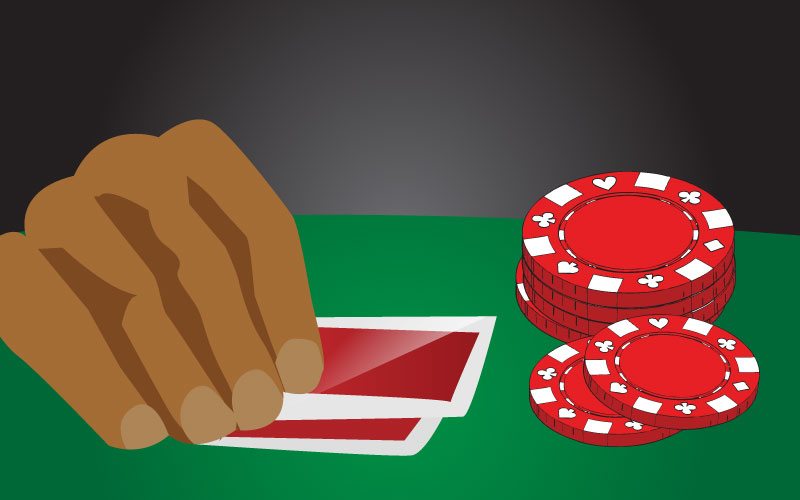Implied Odds vs. Pot Odds
In a previous post (part 9 to this guide), I defined pot odds as the ratio of the amount of money already in the pot to the amount of money you have to call to stay in a hand. Thus if the pot has $40 and you have to call an $8 bet then you have pot odds of 5:1.
Pot odds are helpful because they can tell us whether or not it is profitable to make a call to see the next street. For example, if we have an 8 out open end straight draw on the flop then using the rule of 2 we know that we have about a 16% chance of hitting our 8 outs on the next street and we know that we need about 5:1 pot odds to make a breakeven call.
But pot odds don’t account for future betting. And in most poker games there is often going to be betting on future streets. Implied odds takes this future betting into account. So your implied odds are your pot odds with the estimated future betting taken into account. For example if we have the same 8 out open end straight draw on the turn so we know there is only one more round of betting to occur, we know that we need about 5:1 pot odds to make a breakeven call. But if we are up against an opponent who we feel is very very likely to bet on the river no matter what card comes and will almost always call when we raise the river when we hit our hand, then we can getting less than our requisite breakeven pot odds because we have implied odds to do so. E.g. if we are playing a $4/8 game and the pot has $32 on the turn after our opp bets then we have only 4:1 pot odds and we don’t have the 5:1 odds that we need to make a breakeven call in terms of strict pot odds. But we know that our opp has a big hand and will bet $8 more on the river almost always, and we know that he will often call another $8 more when we hit our hand and raise. So we can estimate that our opponent will often add another 1.5 BigBets to the pot which is $12. Therefore instead of a $32 pot we can safely estimate that the pot will have over $40. Since all we need is a $40 pot to make a breakeven call, then we should still call in this case due to our implied odds.
The one caveat with implied odds is to make sure that you don’t go crazy with them. Many players, when they first learn of implied odds use them as an excuse to chase any draw. They will chase after a 4 out guttered straight getting only 4:1 pot odds when they need closer to 11:1 because they have the “implied odds” to do so. But implied odds will never increase your chances by that much. Implied odds will often make it profitable for you to stay in a hand where strict pot odds will say that you will be a slight overall loser if you make the call; but they will rarely make a clear overall losing hand turn into a winner.
In my next post I will go over a bunch of example hands and try and bring it all together. I will demonstrate how I use pot odds, implied odds, pot equity, counting outs, my position, and table images to determine whether I will call, fold, or raise.
Submit your review | |









